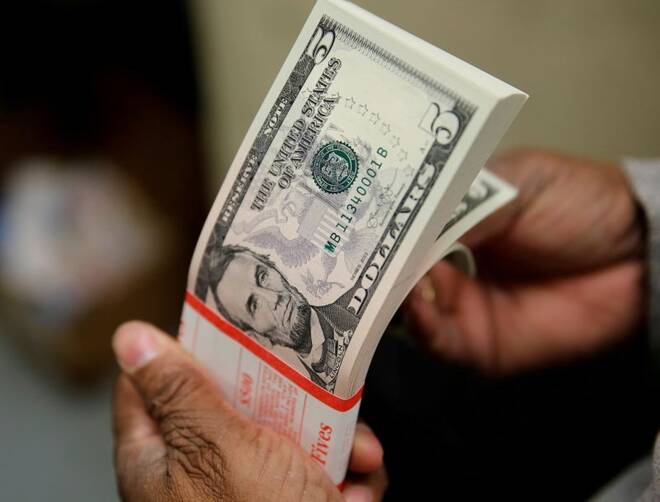Advertisement
Advertisement
Dollar climbs after hot U.S. inflation; euro dips
By:
By Tom Westbrook SYDNEY (Reuters) - The dollar stood at its highest levels of the year against sterling and the euro on Thursday, while the yen was smarting from its sharpest drubbing in a month, after the hottest U.S. inflation reading in a generation fanned bets on rate hikes.
By Sinéad Carew
NEW YORK (Reuters) – The dollar rose to almost 16-month highs against the euro and other currencies on Thursday, after the hottest U.S. inflation reading in 30 years encouraged bets that the Federal Reserve would tighten monetary policy faster than expected.
News on Wednesday that U.S. consumer prices rose last month at the fastest annual pace since 1990 fueled speculation that the U.S. central bank would lift interest rates sooner than expected as traders question its stance that current high inflation is “transitory.”
The dollar index looked set for a second straight day of gains, touching a session peak of 95.197, its highest since July 22, 2020. It was last up 0.36% at 95.1630.
The euro was down 0.28% at $1.1446 after hitting $1.1430, the lowest since July 2020.
“It feels like we’re still trading the repercussions of the CPI,” said Vassili Serebriakov, FX strategist at UBS in New York.
“The path of least resistance in the short term appears to be dollar higher. … Stronger inflation weakens the transitory narrative, which means the Fed might need to tighten sooner.”
Second-day inflation-related bets and closure of the U.S. bond market for the Veterans Day holiday likely reduced trading volume and amped up price volatility, said Joseph Trevisani, senior analyst at FXstreet.com, a website following financial markets.
“Generally when the bond market is closed there’s less liquidity and you tend to get more exaggerated moves because there’s less liquidity to absorb any particular move,” he said.
Sterling was down 0.31% at $1.3363 after hitting $1.3359, its lowest since December 2020. Data showing Britain’s economy lagging rivals in the July-September period did little to help.
The greenback was last up 0.15% against the Japanese yen, trading in a range of 113.81 yen to 114.15 yen during the day after the U.S. currency rose sharply on Wednesday.
The dollar scored its second straight day of gains against another safe haven, the Swiss franc, last up 0.40% at 0.9217.
Swiss National Bank governing board member Andrea Maechler said at an event late on Thursday the Swiss franc remained in demand as a safe haven investment with market uncertainties elevated due to the ongoing COVID-19 pandemic.
The Australian and New Zealand dollars were pulled lower by the U.S. dollar strength. The Aussie was last down 0.46% at $0.7291 after hitting a month low of $0.7287 and New Zealand’s Kiwi dropped 0.54% to $0.7019 after hitting its lowest level since Oct. 14. [AUD/]
Turkey’s lira tumbled to a record low of 9.975 to the dollar after the U.S. inflation reading, and on growing expectations that Turkey will cut rates again soon.
In crypto currencies, Bitcoin was up 0.2% at $65,053.95 after hitting a $69,000 intraday record on Wednesday.
(Additional reporting by Tommy Wilkes and Saikat Chatterjee in London, Editing by Timothy Heritage, Mark Potter and Nick Zieminski)
About the Author
Reuterscontributor
Reuters, the news and media division of Thomson Reuters, is the world’s largest international multimedia news provider reaching more than one billion people every day. Reuters provides trusted business, financial, national, and international news to professionals via Thomson Reuters desktops, the world's media organizations, and directly to consumers at Reuters.com and via Reuters TV. Learn more about Thomson Reuters products:
Advertisement
